19+ SAMPLE Change Management Proposal
-
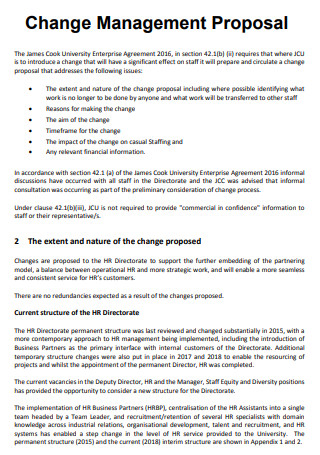
Change Management Proposal
download now -
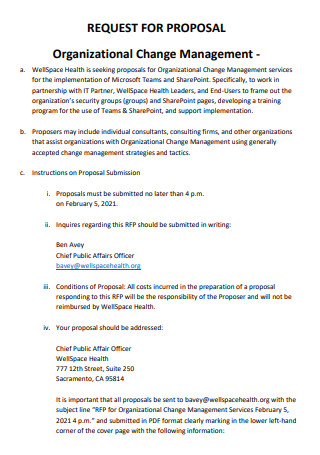
Organizational Change Management Proposal
download now -
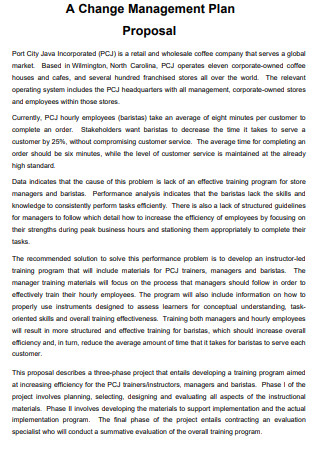
Change Management Plan Proposal
download now -
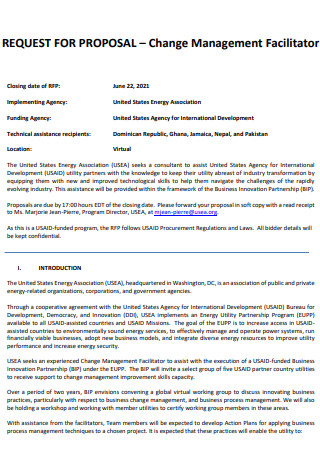
Change Management Facilitator Proposal
download now -
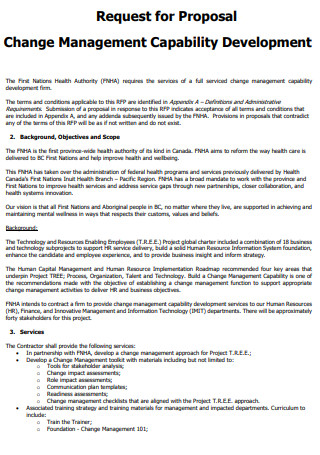
Change Management Capability Development Proposal
download now -
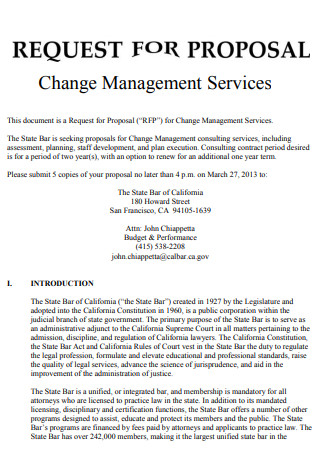
Change Management Services Proposal
download now -
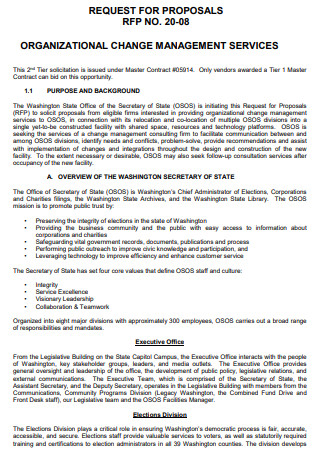
Organisational Change Management Services Proposal
download now -
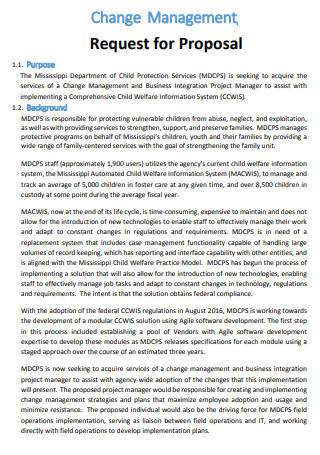
Sample Change Management Proposal
download now -
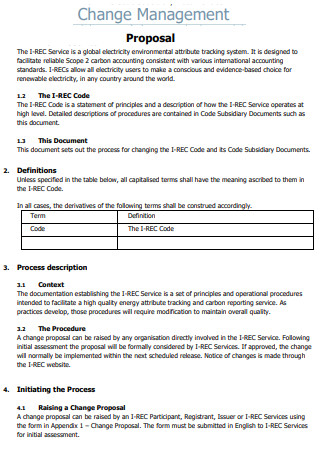
Subsidary Change Management Proposal
download now -
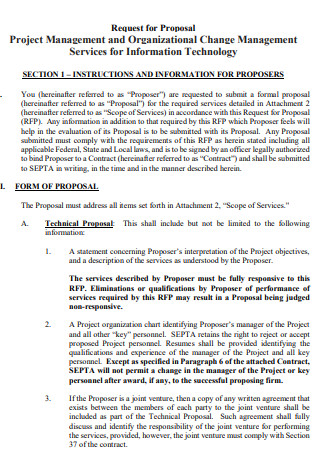
Project Change Management Proposal
download now -
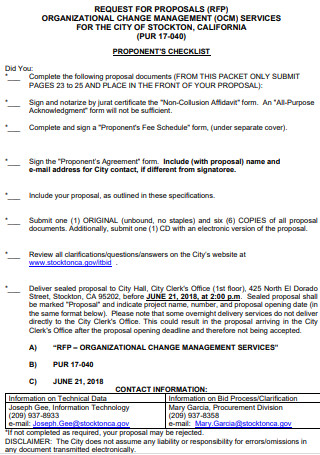
Simple Change Management Proposal
download now -
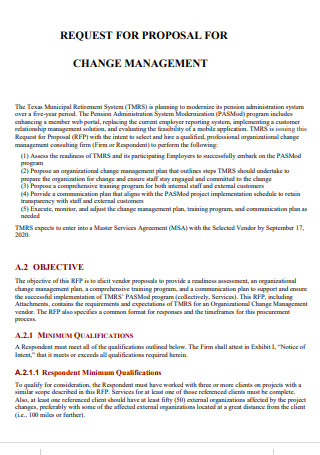
Municipal Change Management Proposal
download now -
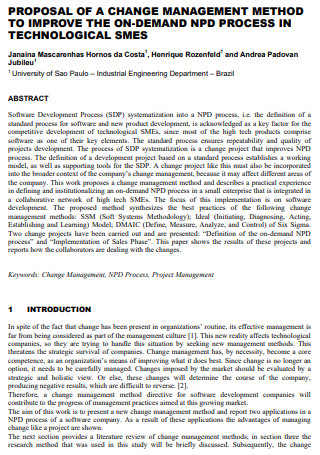
Change Management Method Proposal
download now -
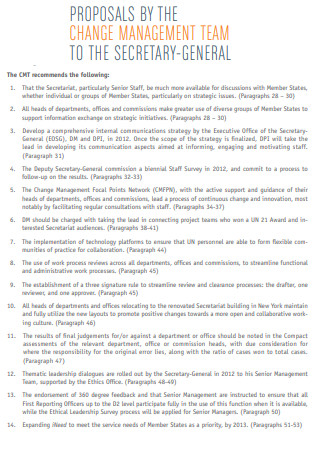
Change Management Team Proposal
download now -
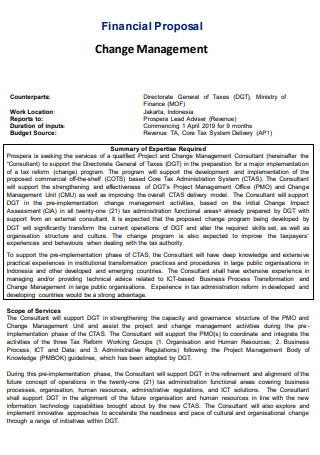
Financial Change Management Proposal
download now -
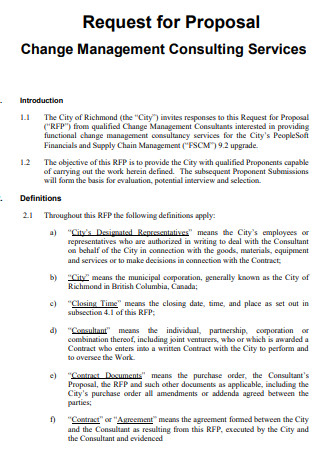
Change Management Consulting Services Proposal
download now -
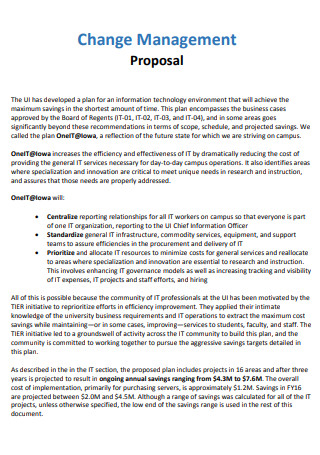
University Change Management Proposal
download now -
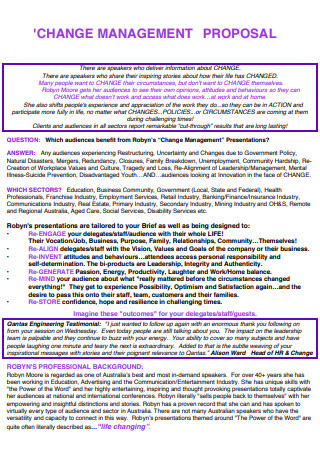
Change Management Proposal Template
download now -
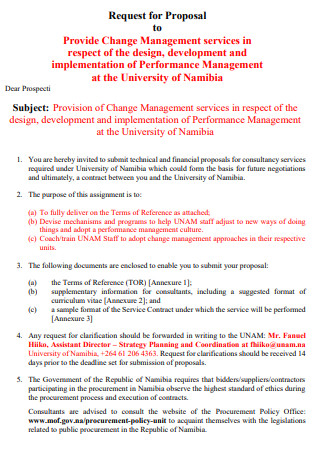
Provide Change Management Proposal
download now -
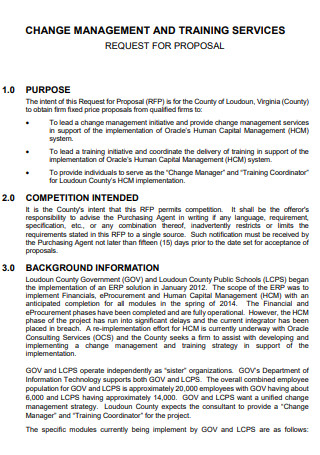
Change Management Training Service Proposal
download now
FREE Change Management Proposal s to Download
19+ SAMPLE Change Management Proposal
What Is a Change Management Proposal?
What’s Inside a Change Management Proposal?
Steps in an Effective Change Management Process
FAQs
Is change management the same in all companies?
What is action empowerment in a change management process?
What happens during change management failure?
What Is a Change Management Proposal?
Before we begin with this document, what is change management? Well, since change is one constant thing that happens to us in the real world, especially in businesses, it needs to be properly managed. Change management is a collection of rules and procedures that govern change in an organization by assisting people in adapting to, settling into, and thriving in the new structure. In general, it attempts to effectively execute company-wide change by ensuring that all shareholders are on board with the changes and receive the necessary guidance and training on how to better align themselves with the new goals and initiatives. Whether employees like it or not, change is necessary for organizations to remain competitive, and it must be managed appropriately to make the transition process acceptable.
To manage changes that happen inside the company, a change management proposal/plan needs to be involved. This is a business document that lays out and describes the steps that a corporation must take to make the change management process more pleasant for those who are affected by it. In addition, this agreement assures budget, schedule, scope, communication, and resource control. Since there are different types of companies that exist, in order for this document to be effective, it should be tailored depending on an organization’s culture and objectives, as well as the characteristics of a specific change. And when this document is written properly, it saves time, reduces stress, and lowers expenses that come with the change process.
What’s Inside a Change Management Proposal?
The prospect of having to undergo a change in a company may be intimidating in its own right, but with an effective change management proposal in place, there is a chance that the worries will be eliminated. In order for the document to be effective, a change management proposal needs to have the following key components in place:
Steps in an Effective Change Management Process
The prospect of everything changing in an organization is already daunting enough, which is why this entire process needs to be effective to alleviate some of the concerns that come with it. With that being said, here are the steps that make up an effective change management process:
1. Identifying What Needs to Change
Since the entire change process can be intimidating, the logical first step to not making a mess of the entire change management process would be properly identifying what things need to be changed. Any change initiative begins with the recognition that there is a problem in the company. The first stage in managing change is to identify the area or areas that require improvement. Identifying what needs to be changed is critical because it provides a sense of direction, explains why the change is necessary and clarifies the organization’s future goals. Determining what needs to be adjusted also entails determining who will be affected directly by the change and articulating top management’s responsibility in ensuring a seamless transition.
2. Identifying Who the Stakeholders Are
The next step in the change management process after identifying what needs to be changed would be identifying who the stakeholders are and subsequently communicating with them. A critical phase in the change management process is identifying and communicating with stakeholders about the change’s necessity and advantages. Upper management must initially be on board with a top-down approach to change management since they will authorize, finance, and support change. The stakeholders who are directly or indirectly affected by the change must then be persuaded to accept the change. The better the observations of the change management process will be, the more stakeholders will be hooked on the idea.
3. Planning the Roadmap
The next step after identifying who the stakeholders are and talking to them about the change would be to plan out the roadmap of the change management process. The change management process’ roadmap also functions as a step-by-step change implementation method. This will specify where the change will begin, what resources will be necessary to accomplish the change, the total cost of the operation, and the desired outcome. It must be highlighted that the preparation should be done in small increments so that the stakeholders are not overwhelmed with large changes at once. It is important that this approach should be planned to reduce risks and enable a smooth transition and comprehension of the new structure.
4. Equipping Managers With What is Needed
After planning out the roadmap of the change management strategy, the next step would be equipping the change managers with what they need. It’s critical that change managers, who have direct reports to employees and are in charge of enforcing changes, have everything they need to make the change management process a success. The resources required will be determined by the process, output, or approach being changed. Managers in command of the change management process must have the resources they require to achieve success, whether it be software, training manuals, funds, or other resources.
5. Communication Training
The next step after equipping the managers with what they need during the change management process would be placing emphasis on communications training. Communication training is an important part of adopting change management since everyone reacts to change differently based on where they are on the curve. Regardless of how critical it appears to be, businesses frequently overlook or fail to follow this step, resulting in disastrous consequences. Managers must be skilled in handling communication with various people at various phases of the change acceptance process to avoid such catastrophic adjustments.
6. Measure How Effective the Change Was
After placing emphasis on communication training, which is arguably the most crucial step of the change management process, it’s time to proceed to this last step. In this step, key performance indicators (KPIs) will have to be set up to monitor the efficacy of your change management approach. Measuring success is critical in the process because, in order to create meaningful change, businesses must include a metric that demonstrates if the change has occurred and whether the execution was effective. Measuring success is a useful tool for guiding future change management decisions and initiatives, as well as for explaining the process’ efficacy to decision makers.
FAQs
Is change management the same in all companies?
No, it isn’t. The change management process largely depends on how complex a company’s operations can be. For example, in healthcare-oriented firms, the necessity of change management is held in much higher esteem than in other sorts of enterprises, because there are many more factors to consider, such as patient confidentiality, safe data management, credentialing systems, and so on. In order to ensure excellent patient care while having providers and insurance companies on the same page, the change management process must be visible, rapid, and updated on a frequent basis.
What is action empowerment in a change management process?
During the change management process, the process of reducing impediments entails action empowerment among team members. It is critical to value constructive feedback during action empowerment since it helps to improve the team and convert the organization’s flaws into strengths. Furthermore, during the change management process, team members may also effectively empower one another by acknowledging their accomplishments and development.
What happens during change management failure?
Failure to emphasize change management can result in several failures on both a project and organizational level. When effective change management is not prioritized, projects might run over budget, endure a variety of delays, and miss crucial milestones. Furthermore, ignoring adequate change management can result in a significant loss of productivity, poor work quality, and, even worse, the loss of competent and important staff.
To wrap up, changes are essential for any company if they wish to stay ahead of its competitors and develop its growth. In order to properly deal with changes and the people who will be affected by them, proper change management is needed. In this article, there are plenty of sample templates of this proposal document that exist to help you give a better understanding of what this topic is all about and also to aid you in the process of writing one should it be needed.
